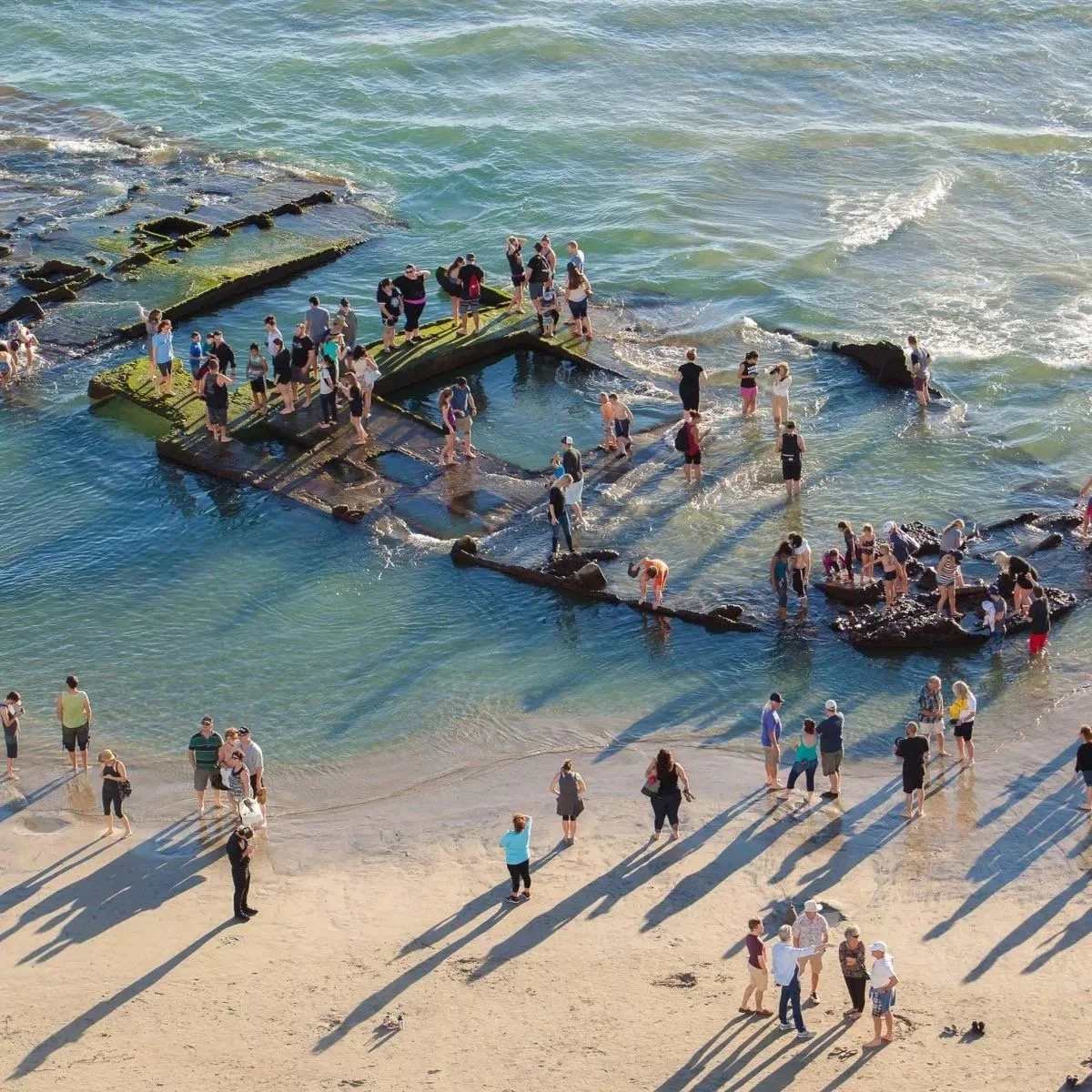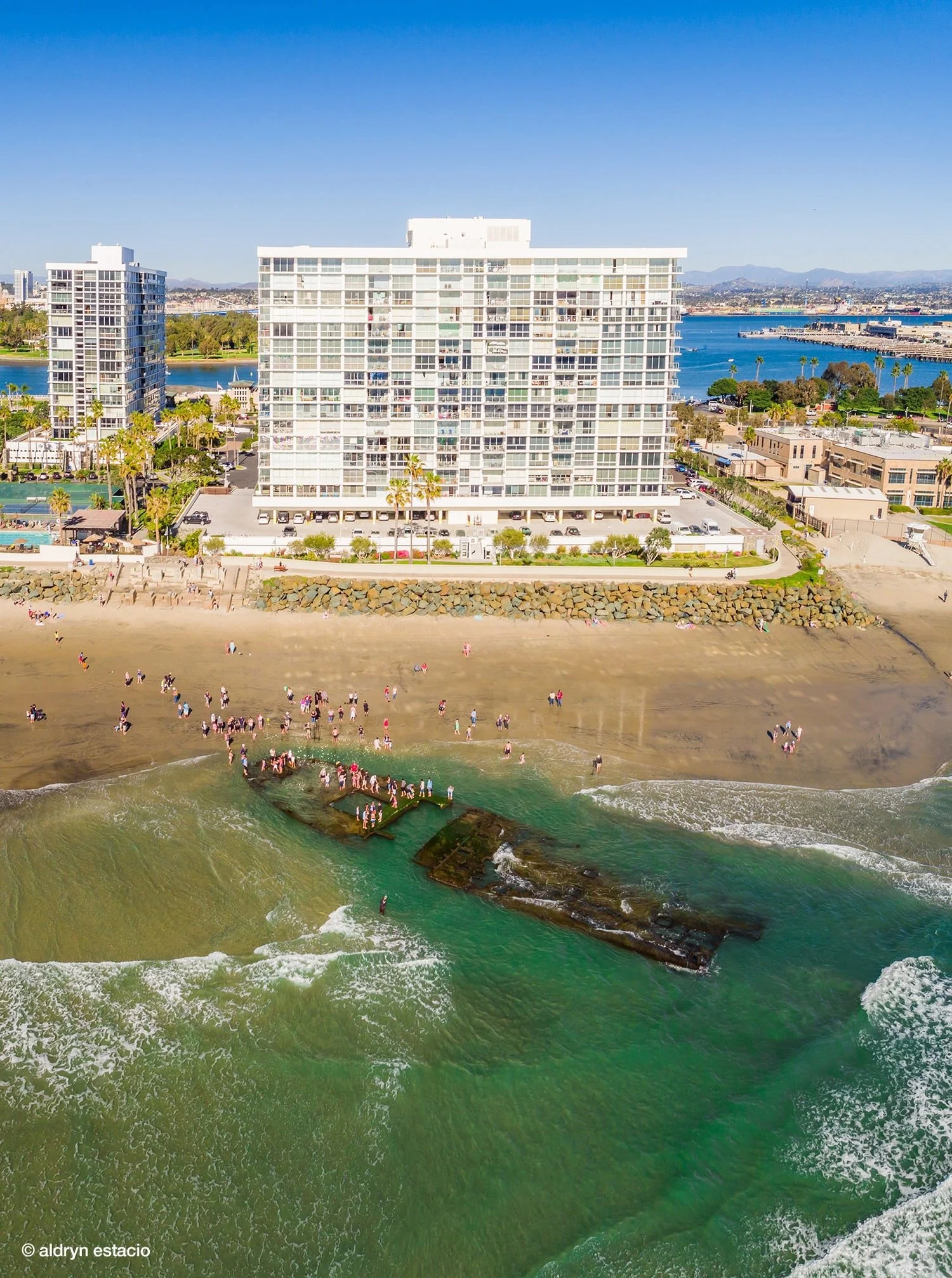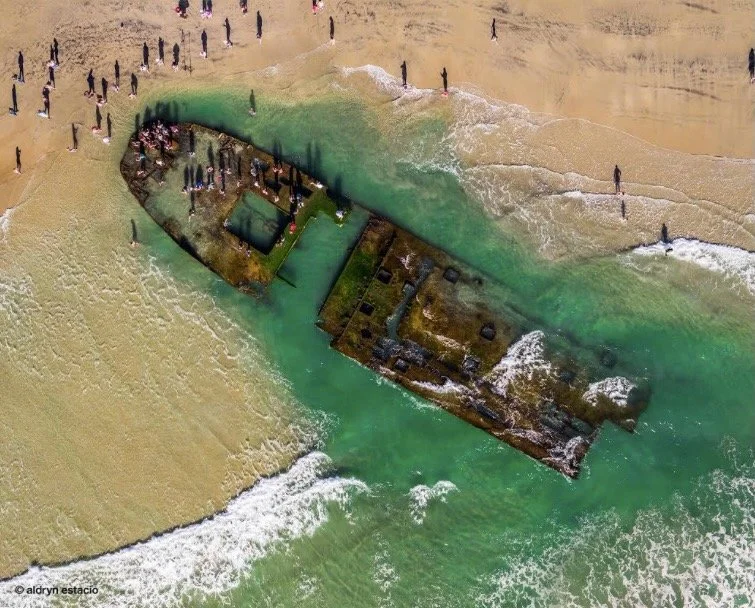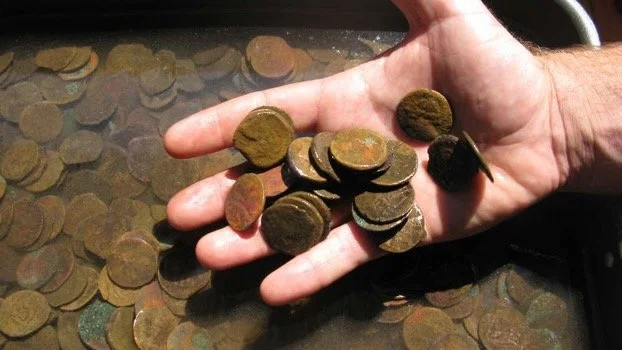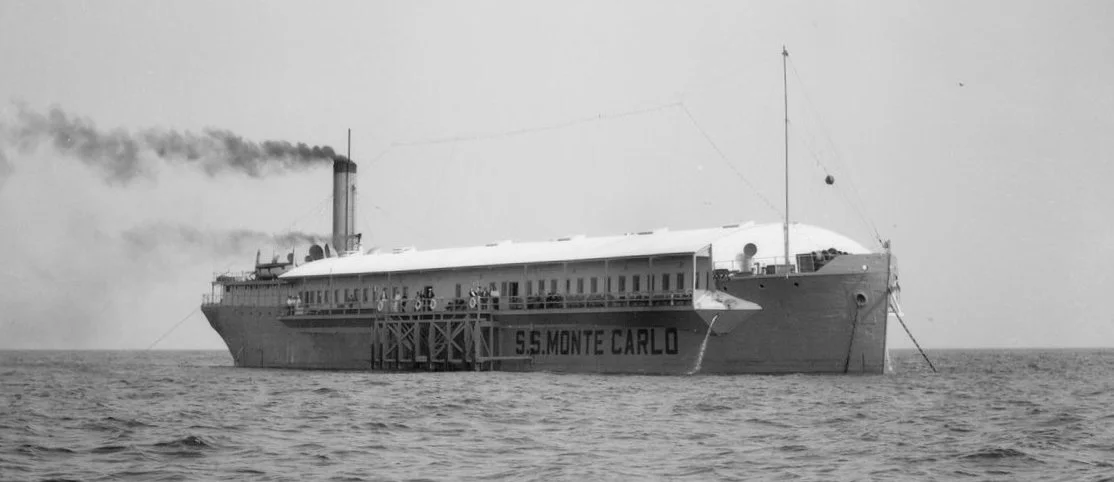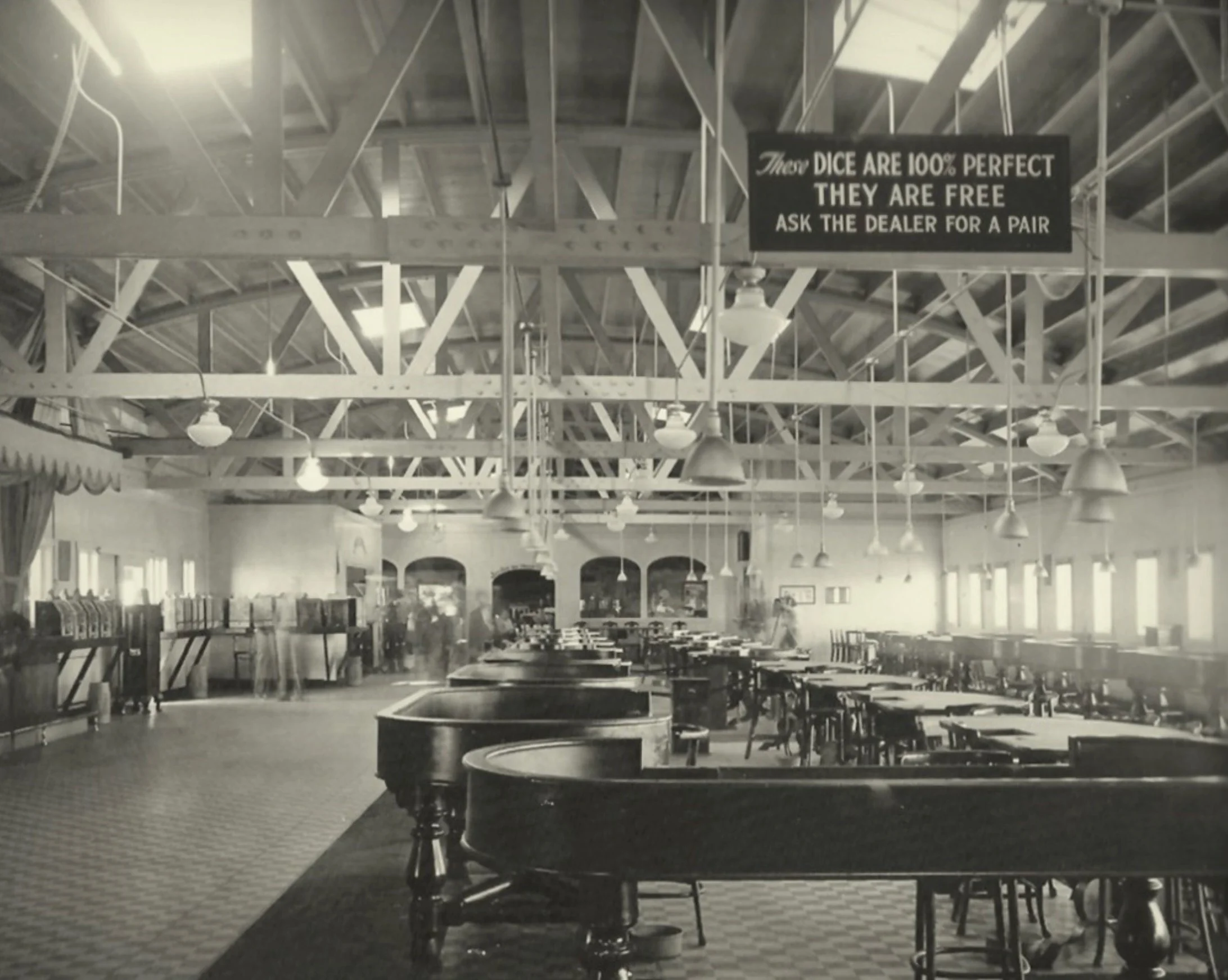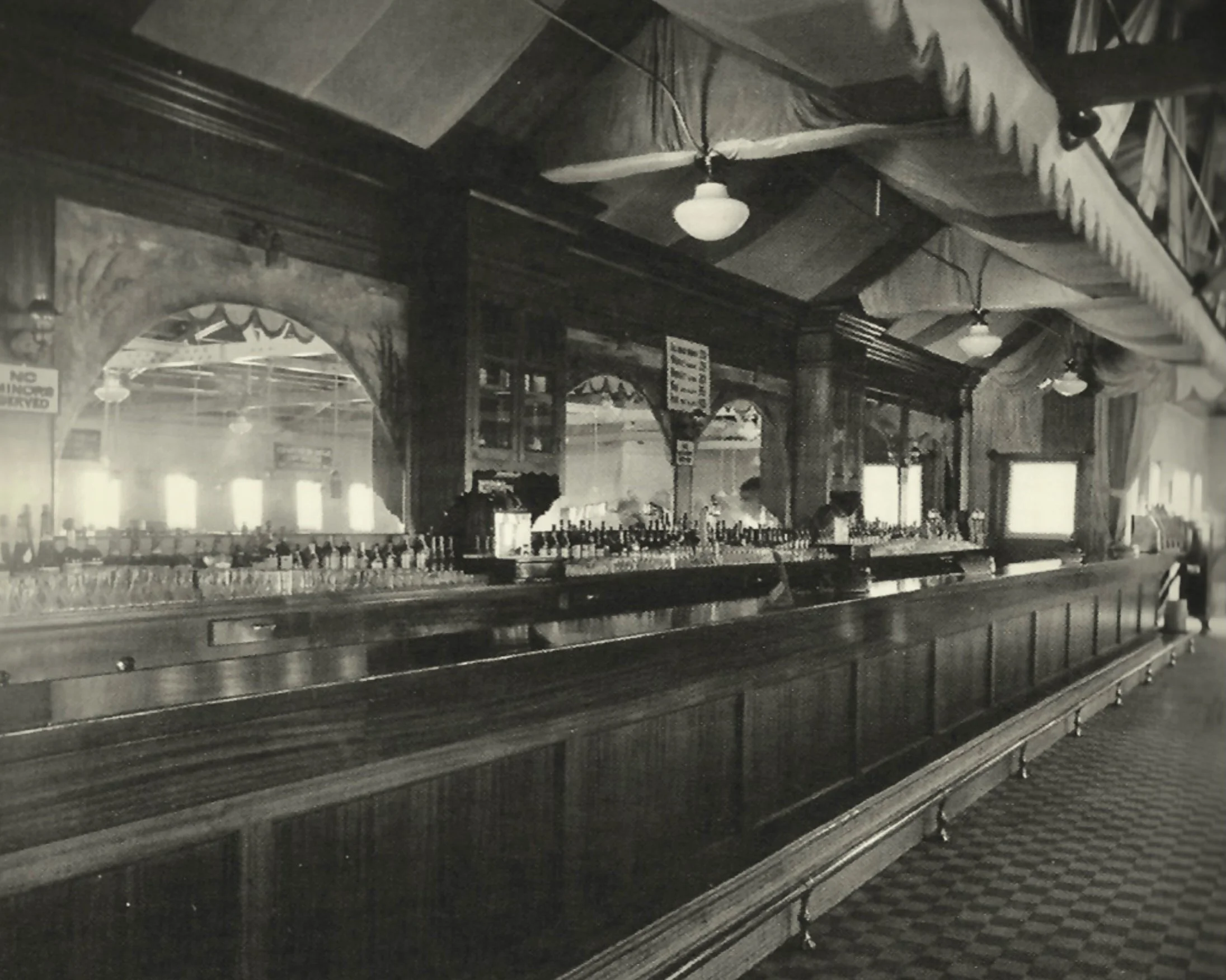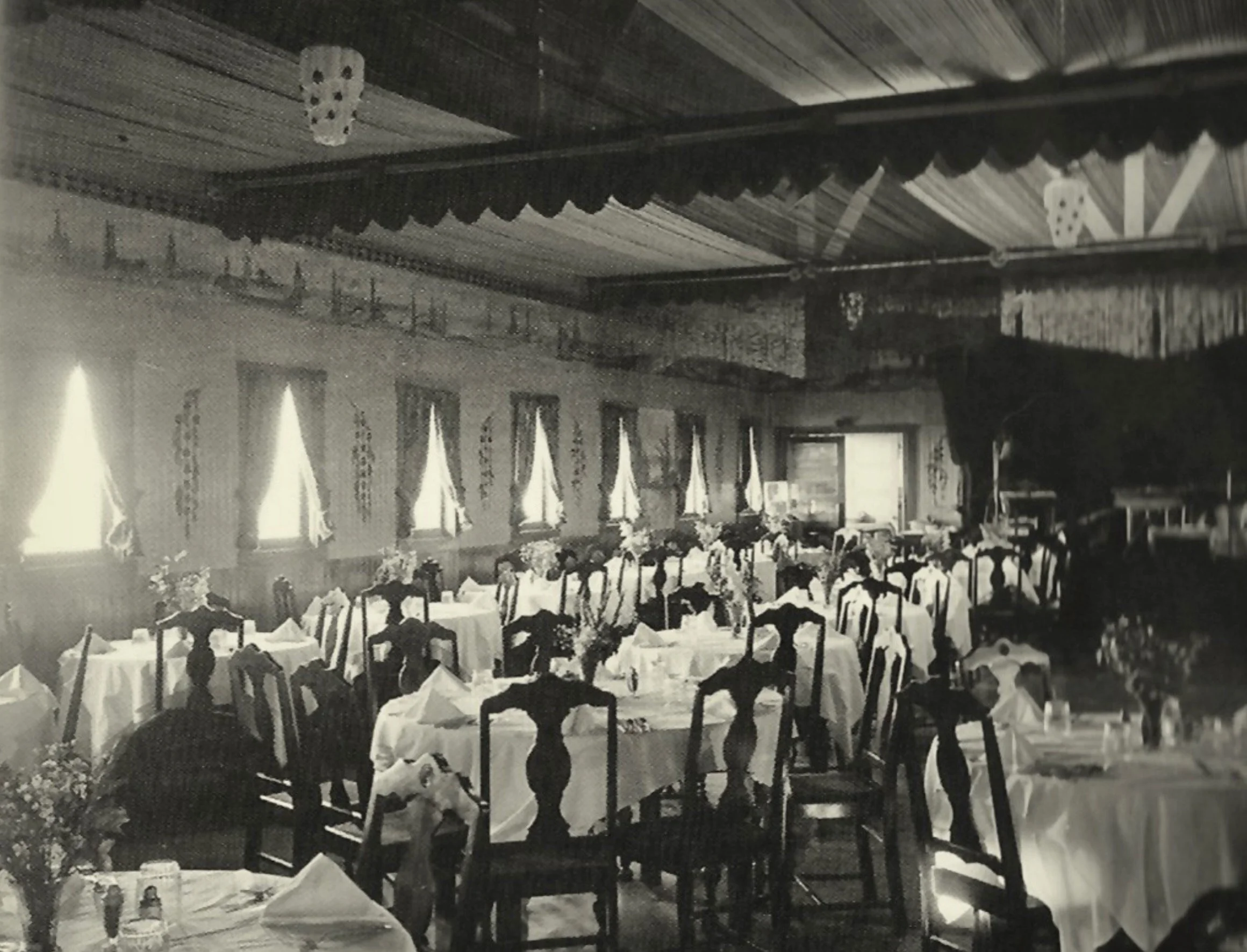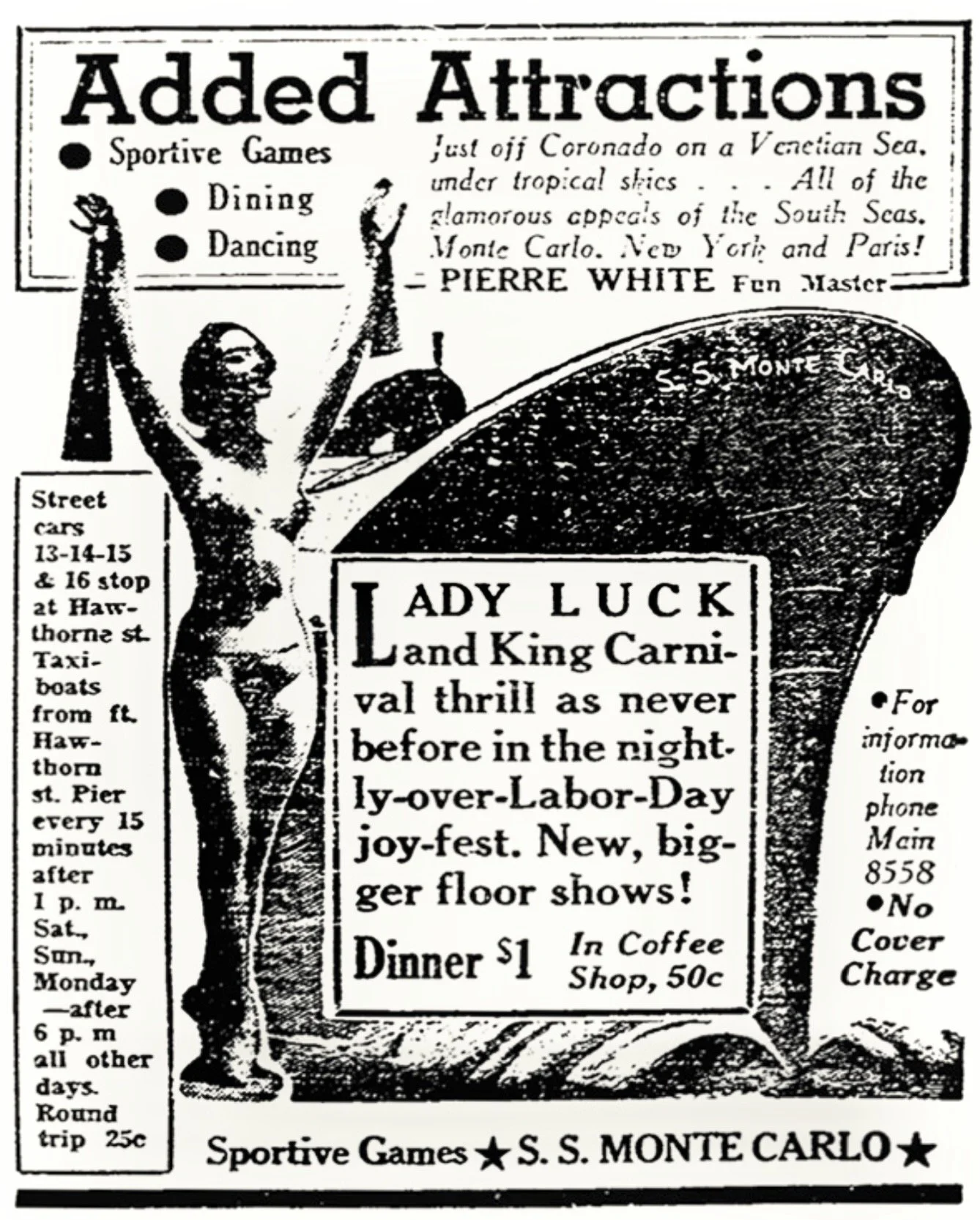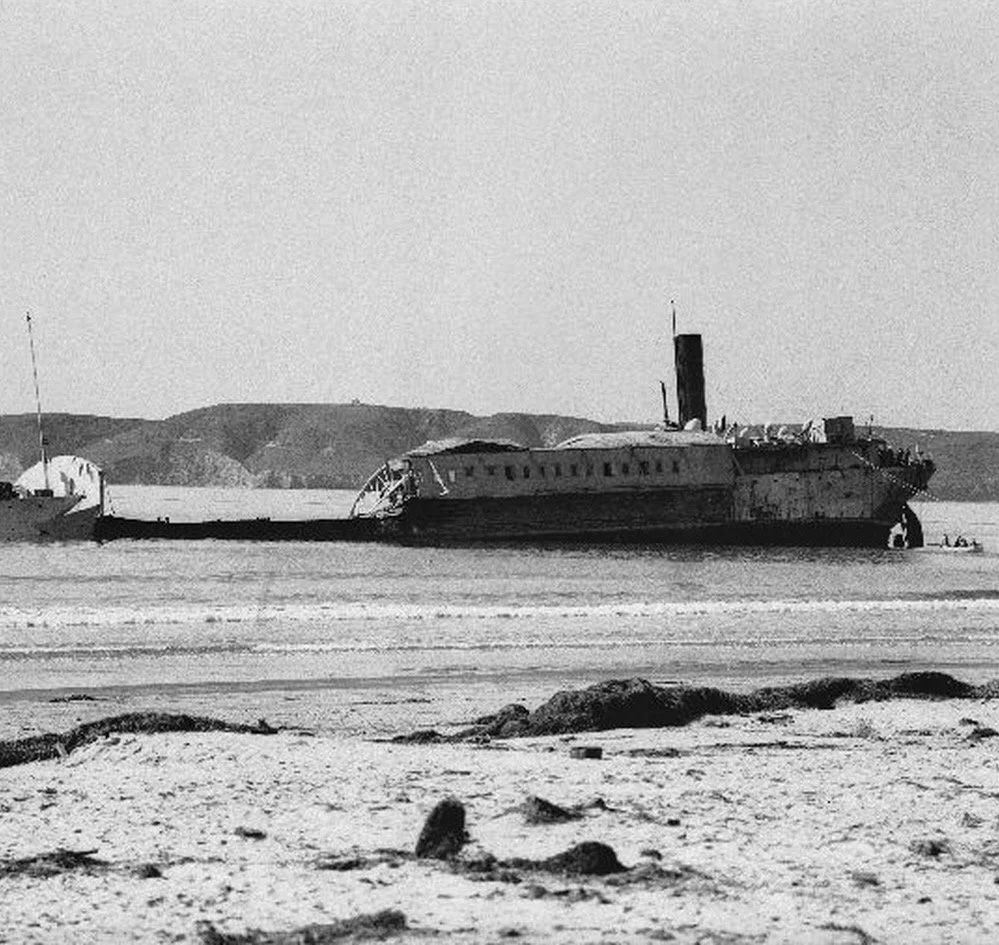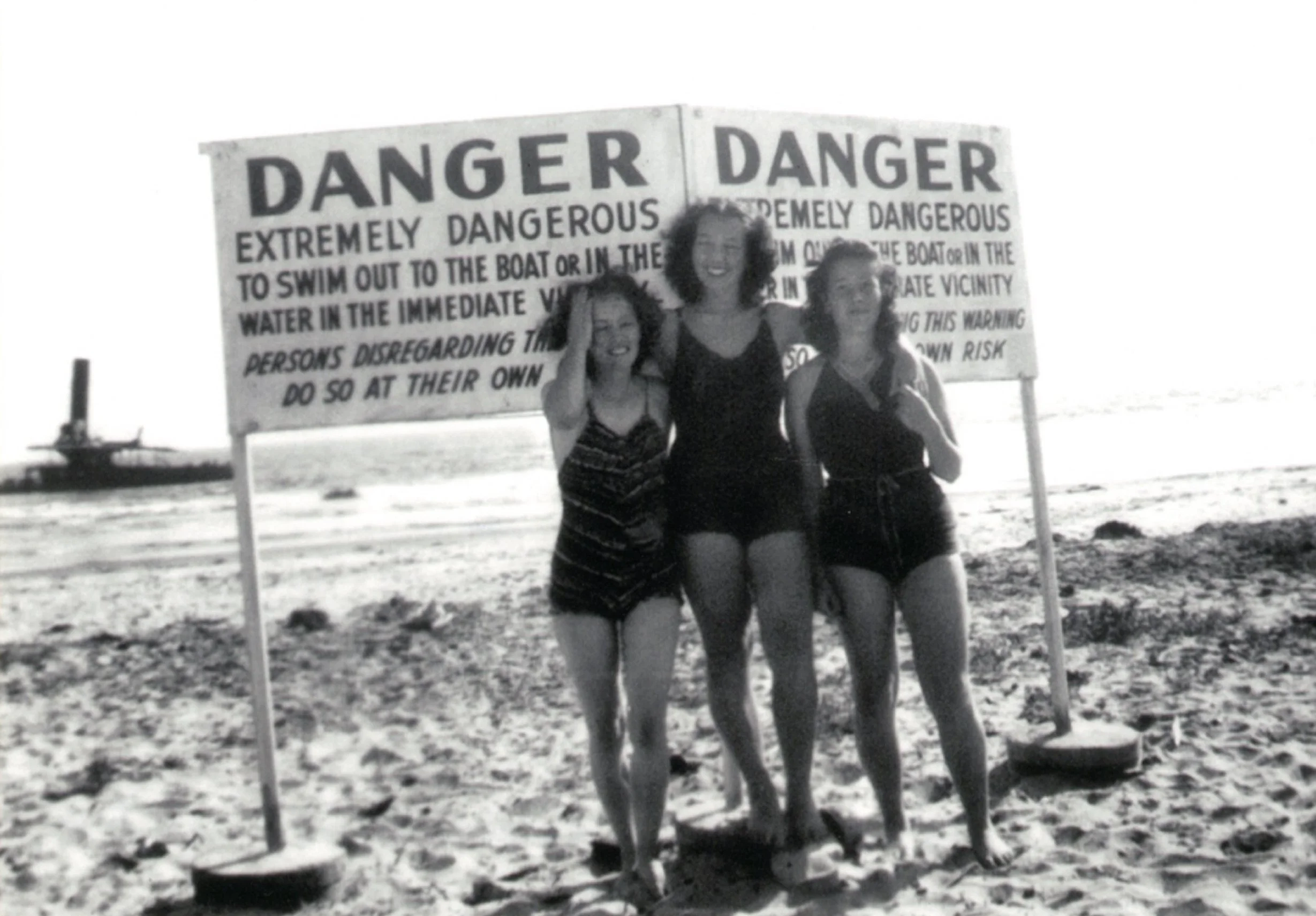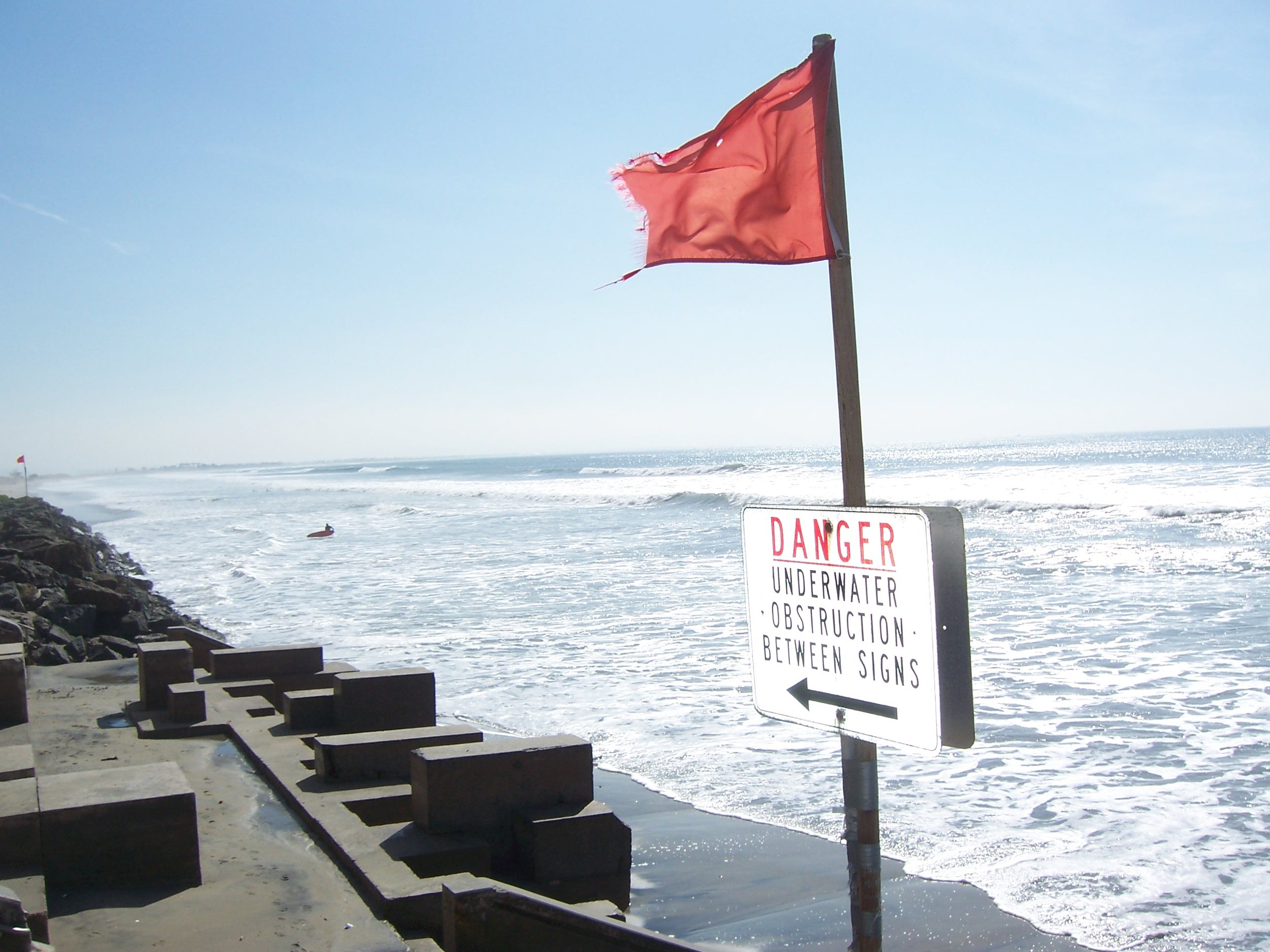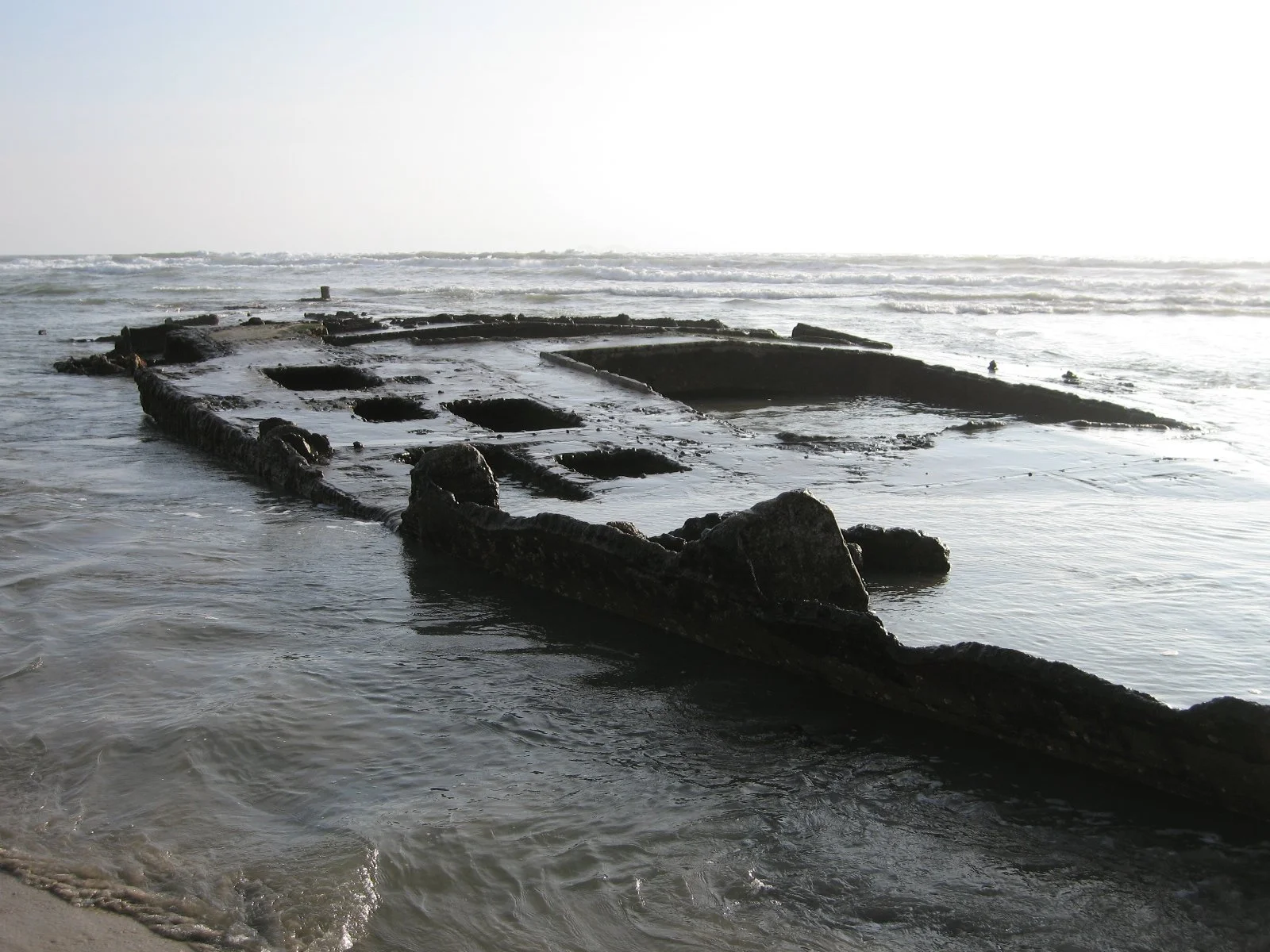Wreck of the S.S. Monte Carlo
Coronado Beach - Coronado, California
The ship wreck of the S.S. Monte Carlo on Coronado Beach is an elusive bucket list item for many visiting explorers. Washed ashore during a winter storm on New Year’s Eve, 1936, the shipwreck is typically covered with with a layer of sand. However, during the winter solstice, coastal King Tides produce extreme high/low tides. Combine this phenomenon with an off-shore winter storm swell and the powerful rip-tides pull the sand off the wreck, leaving her exposed during the most extreme low tides.
Sunken treasure discovered on Coronado Beach shipwreck
In 2012, a local Coronado resident embarked on a hunt to salvage it’s legendary sunken treasures. After cutting several holes in the deck, $410,000.00 in sunken silver coins were discovered.
This the story of the S.S. Monte Carlo and the role it played in Coronado’s history.
Silver coins discovered on S.S. Monte Carlo shipwreck on Coronado Beach.
The S.S. Monte Carlo - 1932
Sportive Games (Gambling), Dining & Dancing
3 miles off the Coronado Beach, the S.S. Monte Carlo is at anchor awaiting the evening’s guests to arrive.
During the early 1930’s, a number of ships operated as floating gambling casinos just off the coast Southern California. Anchored just 3 miles off shore, these illegal gambling ships managed evade US Law operating in international waters.
The S.S. Monte Carlo was thought of as the ‘crown jewel’ of Southern California’s off-shore gaming business. Operating off Long Beach & Coronado in the 1930’s, it featured blackjack, roulette, and dice tables, poker and slot machines.
The ship pulled in as many as 15,000 visitors a week with rumored visits from celebrities like Clark Gable & Mae West. Taxiboats operated regular schedules taking guests to and from the floating casino.
Formerly known as the McKittrick, the commercial oil tanker was built near the end of WWI. Steel was scarce due to the war effort so the decision was made to build the hull with poured concrete.
In 1932, she was converted into a gambling ship and renamed the S.S. Monte Carlo. Operated by known organized crime figures, the gambling businesses were always under attack from State and Federal officials. At one point the ship had to halt operations temporarily due to raids from authorities, a common occurrence during the period.
A New Year’s Storm- Dec 31,1936
15 foot swells break the ship’s anchor mooring, pushing her ashore
Coronado Beach - New Years Day - Jan 1, 1937
Coronadans by the hundreds flocked to the scene, grabbing gambling tables, roulette wheels, silverware and liquor that washed ashore as the vessel lay pounded by the surf. Although the two crew members managed to get to shore, one sailor swam out to claim salvage and drowned.
Because the Monte Carlo was technically illegal once she was beached inside the three-mile limit, no one wished to claim ownership and slowly her wooden superstructure began to break up without any private party or body of government laying claim to her.
Over the decades, visitors and historians have only seen glimpses of the ship.
The wreckage can be seen underwater at low tide, and is occasionally exposed during strong storm tides. The surrounding beach where she came to rest was coined locally as "Shipwreck Beach".
Legend has it that there is still thousands of silver coins still buried within the sunken ship.
An excerpt from ‘Coronado: The Enchanted Island’ by Katharine Carlin.
“New Year’s 1936/1937 opened with high winds and rough seas that caused the gambling ship, S.S. Monte Carlo, anchored three miles off the Coronado coast to break her mooring and come hurtling toward the shore. Floating gambling vessels such as the Monte Carlo were quite a draw in this era of Prohibition. Small boats ferried partygoers to the festive ships where they could gamble and drink without fear of the law. Sometime after midnight on January 1st, 1937, after the crowds had gone ashore and leaving only the two man crew aboard, the party ship lost her anchor. She began her helpless drift toward shore, finally settling just south of the Hotel del Coronado.
Because of this, the concrete hull lies today, exposed at low tide, in front of the most southern Coronado Shores condominium, south of the Hotel del Coronado. Various agencies including the U.S. Navy, U.S. Coast Guard, and City of Coronado are still in dispute as to whose responsibility and liability lies with the wreck.”
‘Coronado: The Enchanted Island’ by Katharine Carlin.
The hunt for sunken treasure
Lifetime Local Finds $410,000 in Silver Coins from S.S. Monte Carlo Wreckage
Published by The Coronado Times - April 2012
This is the kind of breaking news that makes you gasp in astonishment and become green with jealousy.
Early this morning, Coronado’s Bruce Johnson was able to recover roughly $410,00 in silver slot-machine coins from the S.S. Monte Carlo from it’s partially, sand-submerged position on Coronado Beach near the Coronado Shores. Yes, you read that correctly, $410,000 in silver coins from a ship that has been beached for over 75 years – completely out in the open. A combination of heavy winter storms, extremely low tides and a Florida-based scavenger service proved to be a perfect storm for one very pleased Coronado local.
Bruce Johnson shared that he has been planning this ‘heist’ ever since he was a boy and had been plotting for years to figure out a way to gain access to the innards of this corroded vessel – physically and legally. Bruce said, “Being born here in Coronado, I grew up listening to stories about all the rumored loot that was trapped inside the Monte Carlo after it sank back in 1936.
About two years ago, I made contact with a Florida Keys scavenger crew and we planned the ‘attack’. Once we were able to pinpoint the strongest ‘metal/silver signal’ using a customized LOL (Low Oceanic Locator), it was as easy as cracking a concrete egg!”.
Just after midnight (Sunday morning) following another storm, Bruce and his ‘hired help’ made their way to the vessel at low tide and started attacking the weakest part of the hull. It took them about two hours to locate the silver and three hours to extract it. By 6am, a crowd started to gather on the beach and the first pile of coins were removed. Bruce’s security personal took the silver to a vehicle at the Coronado Shores and kept is closely guarded. Coronado Police arrived at the scene just as the last load of silver was brought out.
Under maritime salvage laws, Bruce has the right to anything recovered since the original owners of the boat are no longer living and no one else has ever tried to remove or reclaim the ship.
Bruce has no immediate plans on where to spend the money, however, he has always wanted to buy a boat. Perhaps a fitting name for Bruce’s boat would be the S.S. Moolah Carlo or the Lirpa Sloof.
Coronado local Bruce Johnson strikes it rich on the S.S. Monte Carlo!
Coronado’s Bruce Johnson proudly displays the silver coins he recovered from the S.S. Monte Carlo early this morning.
A sign warns swimmers and surfers to beware of the ship wreckage that lies just below the water in front of the Coronado Shores.
Note the multiple square holes made by the Florida-based scavenger crew hired by Bruce Johnson.
History of the S.S. Monte Carlo
On December, 31, 1936, the S.S. Monte Carlo (a 300ft gambling ship) broke free from it’s anchor lines during a storm and the ship ran aground just south of the Hotel del Coronado. It was a concrete-hulled ship that was originally launched as the McKittrick from Wilmington North Carolina in 1921. In 1936, the S.S. Monte Carlo was anchored three miles off of Point Loma (international waters) where the patrons were interested in just three things: dice, drinks and dolls.
When the ship ran aground, no one was hurt, but it quickly took on water, sand and beached itself in a position that made it impossible to move. Over the years Coronado city workers have gone out to the vessel and trimmed off sharp areas in an effort to minimize swimming or surfing injuries.

